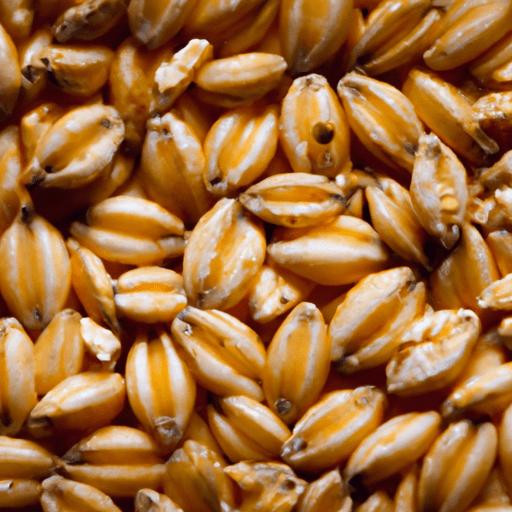Cooking with Quick Barley: A Nutritious and Versatile Grain
Barley, a nutty and wholesome grain, has been a mainstay in kitchens around the world for centuries. Among its various forms, quick barley stands out as a convenient and time-saving option. In this blog post, we’ll explore the taste, cooking uses, nutritional value, and interesting facts about quick barley that will leave you eager to experiment with this versatile ingredient.
Taste and Texture
Quick barley, derived from whole grain barley, retains the inherent chewy texture and slightly nutty flavor that sets this grain apart. Its tender yet toothsome quality is reminiscent of al dente pasta, making it a delightful addition to both hearty and delicate dishes.
Common Uses in Cooking
Quick barley’s versatility makes it a welcome addition to an array of culinary creations. It can be used as a substitute for rice, pasta, or other grains, or take center stage as the star ingredient in salads, soups, stews, and pilafs.
1. Soups and Stews
Adding quick barley to soups and stews brings a satisfying heartiness to the dish, making it a comfort food staple. Whether it’s a classic beef barley soup or a vegetarian mushroom barley stew, the grains absorb the flavors of the broth while providing a pleasant chewy bite.
2. Salads
When boiled until tender, quick barley becomes an excellent base for vibrant and nutritious salads. Tossed with crisp vegetables, fresh herbs, and a tangy dressing, it creates a satisfying and filling meal that can be enjoyed warm or cold.
3. Pilafs and Side Dishes
Quick barley can also be transformed into delightful pilafs and side dishes. Sautéing the grains with aromatics like onions and garlic before simmering them in broth creates a fragrant and flavorful base. You can even add a touch of creativity by mixing in ingredients such as dried fruits, nuts, or vegetables for an extra burst of taste and texture.
Nutritional Value
Quick barley not only adds depth to your culinary creations but also provides a range of nutritional benefits. Packed with fiber, vitamins, and minerals, this nutritious grain is an excellent addition to a balanced diet.
1. Fiber
Quick barley contains a notable amount of dietary fiber, promoting good digestive health, reducing cholesterol levels, and aiding in weight management. A single serving of quick barley can provide a substantial portion of your daily fiber needs.
2. Vitamins and Minerals
Quick barley is a good source of essential vitamins and minerals, including niacin, vitamin B6, manganese, magnesium, and phosphorus. These nutrients play crucial roles in promoting overall well-being, supporting bone health, and boosting energy levels.
Interesting History and Facts
Barley has been cultivated for thousands of years and has played a significant role in the development of civilizations throughout history. Ancient Egyptians even used barley in the production of their beloved beer!
Fun fact: Barley was one of the earliest grains to be domesticated, dating back to as early as 7000 BCE. Moreover, it has been found in the burial sites of ancient civilizations like Babylonians and Greeks, indicating its importance as a staple food.
Experimenting with Quick Barley
Now that you’ve discovered the wonders of quick barley, it’s time to bring this versatile grain into your kitchen. With its delightful taste, wide range of uses, and impressive nutritional profile, quick barley can be your new go-to ingredient for creating hearty and wholesome meals.
So don’t hesitate to explore exciting recipes, experiment with different flavor profiles, and let the unique texture and taste of quick barley elevate your dishes to new heights!
Note: Quick barley is a partially cooked grain and should not be confused with pearled barley, which has the outer husk removed.
Remember, culinary adventures are meant to be savored, so enjoy cooking with quick barley and embark on a delightful food journey like no other!
Quick Barley
Origin: Barley is one of the world’s oldest cultivated grains and is believed to have originated in the Near East around 10,000 years ago. It was one of the first cereals to be domesticated and has been an important food source in various ancient civilizations.
Common Uses: Quick barley, also known as instant barley or pre-cooked barley, is a processed form of barley that cooks in less time than regular barley. It is commonly used to add texture, flavor, and nutrition to a variety of dishes. It can be used in soups, stews, salads, pilafs, risottos, and even in baked goods as a substitute for rice or other grains.
Nutritional Benefits: Quick barley is a nutritious ingredient that offers several health benefits. It is a good source of dietary fiber, including both soluble and insoluble fibers, which can help support digestion and promote a feeling of fullness. Barley is also a good source of vitamins and minerals, including vitamin B complex, iron, magnesium, and selenium.
Unique Properties: Quick barley is processed to reduce the cooking time, making it a convenient option for those who want to incorporate barley into their meals without the longer cooking time associated with regular barley. It retains most of the nutritional benefits of whole barley but has a softer texture. However, it is worth noting that the processing may result in some loss of certain nutrients compared to whole barley.
Historical Significance: Barley has a long history of cultivation and consumption. It was a staple food in ancient civilizations such as Sumerians, Egyptians, and Greeks. In ancient Greece, barley was often used to make a fermented drink called “kykeon,” which was used in religious rituals and social gatherings. Barley’s importance in history can also be seen in its mention in various religious texts, such as the Bible and the Quran.
Overall, quick barley is a versatile ingredient with a rich history. Its convenience and nutritional benefits make it a popular choice for adding texture and flavor to a wide range of dishes.




Use the share button below if you liked it.
It makes me smile, when I see it.